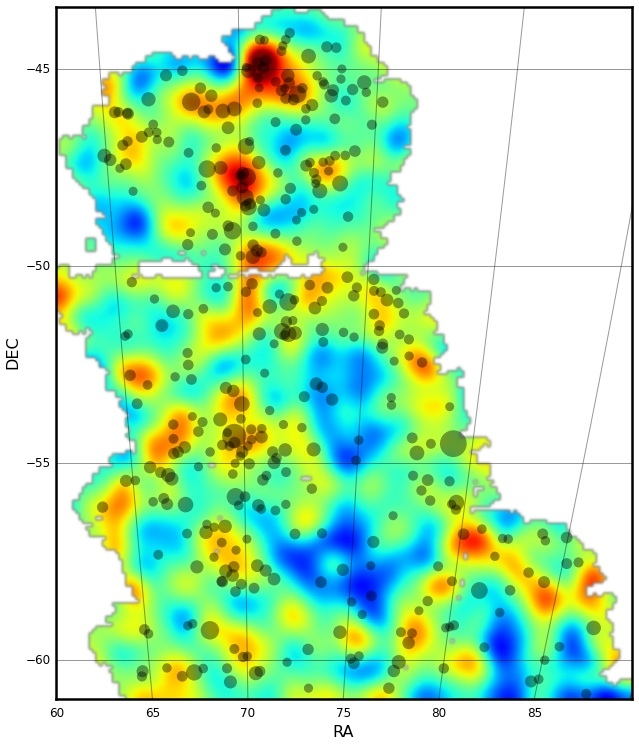
 Credit: Dark Energy Survey
Credit: Dark Energy Survey
The Cosmic Web
Our Universe is held together by dark matter, mysterious stuff that generates little if any electromagnetic radiation, but which has mass and does feel the force of gravity. Dark matter makes up nearly all of the mass in the Universe; in the current epoch, dark matter is about 5 times as abundant as the normal, familiar forms of matter that makes up our stars, our planets and ourselves. Dark matter provides the gravitational pull to enable normal matter to produce galaxies and stars and planets. The galaxies we see when we look at the night sky are strung like random lights on the invisible string of dark matter. This underlying dark structure is nearly impossible to see because dark matter emits no light. But dark matter does gravitate, and, like all gravitating bodies, dark matter bends spacetime. This means that large collections of dark matter can act like a "gravitational lens", distorting or magnifying the images of background galaxies whose light passes through this warped spacetime. Using a sensitive telescopic survey, astronomers have now detected the warping of images of background galaxies produced by gravitational lensing produced by dark matter. This has enabled them to map out the cosmic web of dark matter. The image above shows this derived distribution of dark matter in which yellow and red represent dense regions of dark matter, while the black circles represent the locations of visible clusters of galaxies. This study shows that the densest cluster regions generally correspond to the regions where dark matter is highest, showing that dark matter structures our Universe on large scales.
Published: April 20, 2015
<
HEA Dictionary ● Archive
● Search HEAPOW
● Other Languages
● HEAPOW on Facebook
● Download all Images
● Education ● HEAD
>

Each week the HEASARC
brings you new, exciting and beautiful images from X-ray and Gamma ray
astronomy. Check back each week and be sure to check out the HEAPOW archive!
Page Author: Dr. Michael F. Corcoran
Last modified Monday, 26-Feb-2024 17:34:51 EST


